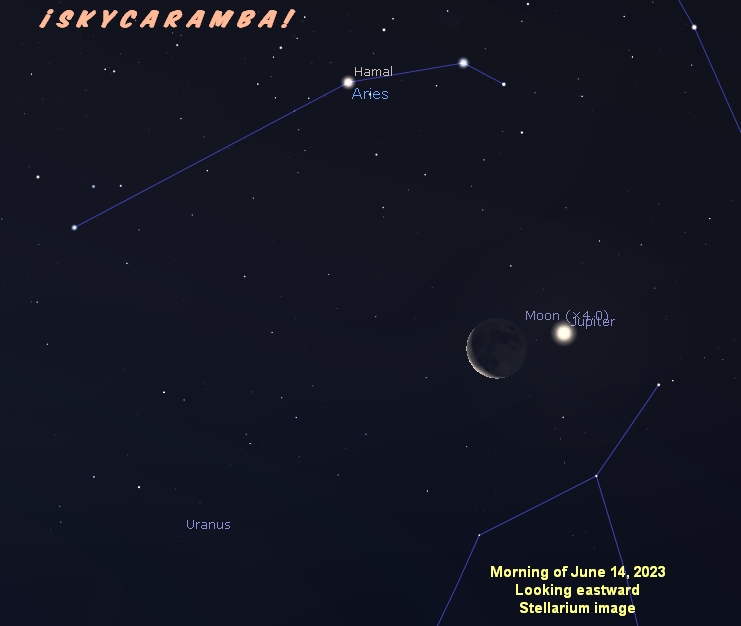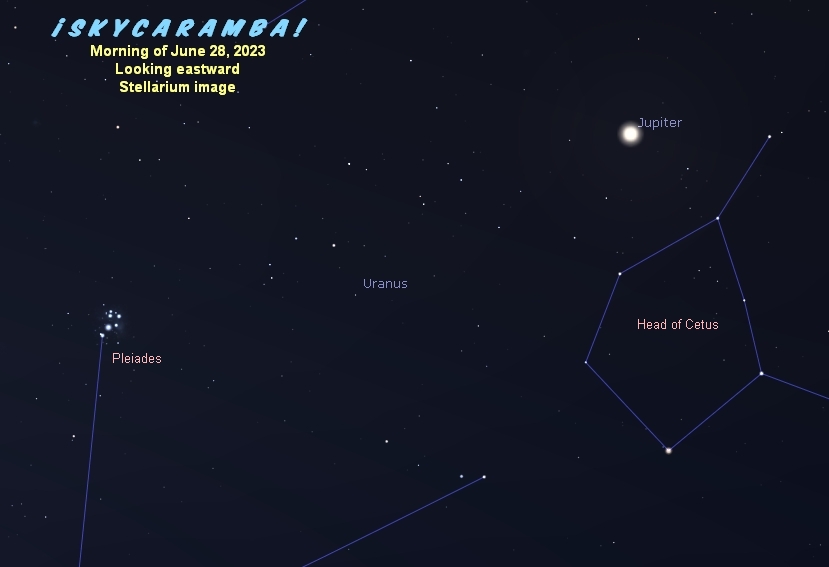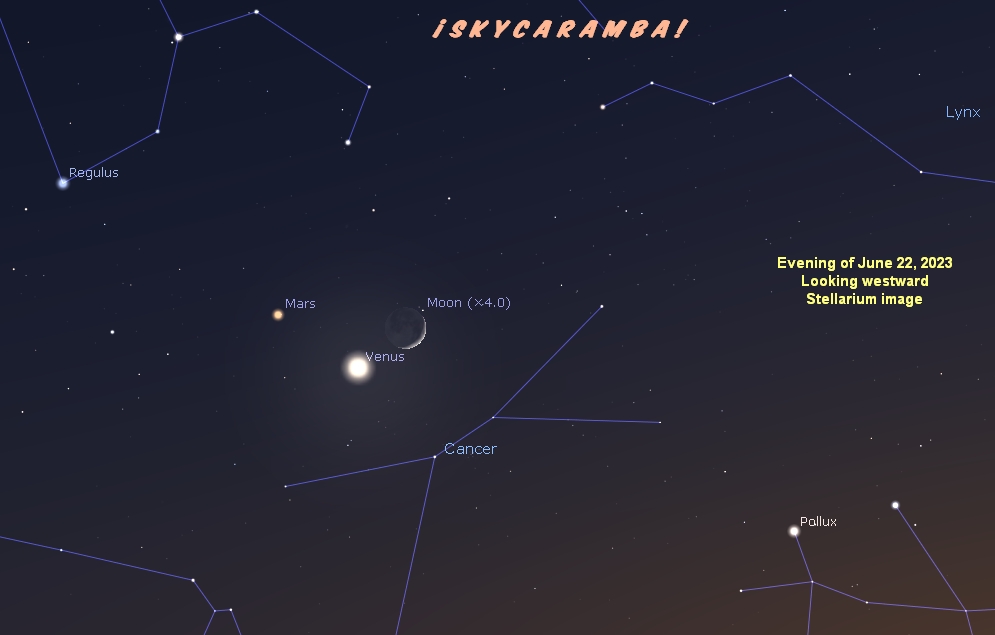As May ended, Mercury had just been at greatest elongation and began its retreat from the morning sky. It won’t be at superior conjunction until July 1, so most sky watchers have about the first half of this month to try to spot it. The messenger planet is predicted to be at dichotomy—its semi-circle phass–on June 4. But because of an unexplained phenomenon, it may not look like it’s at dichotomy until four mornings later. If you have a finder guide, you can watch Mercury, Uranus, and Vesta somewhat close to each other. From middle northern latitudes, they’ll be below Jupiter in the morning sky. Use binoculars or a telescope to magnify Uranus and Vesta into view. Jupiter is near Cetus the sea monster’s head all month. Rising around midnight is Saturn, not moving much in Aquarius this month. And in the evening, Venus follows Mars on the way from Gemini through Cancer and almost to Leo.
Mars moves through the Beehive Cluster in Cancer on the 3rd and 4th. The cluster, known also as M44 and Praesepe, is worth a look in magnfication with or without a visiting planet. It’s called the Beehive because it resembled a cluster of busy bees. On the 4th, Venus is at greatest elongation, but it will continue moving directly all month. So, Mars moves eastward out of Cancer with Venus in hot pursuit. The goddess planet passes through the Beehive on the 14th. Right around the end of the month, Venus seems like it’s another week or two from catching up to and passing the red planet. But it’s not meant to be. They’ll be 3.9° apart on July 1. After that, Mars gains as Venus slows down.
Look for Venus to be at dichotomy, also predicted to be around the 3rd or 4th, but appearing as a semi-circle around the 1st. That’s because of the same unexplained phenomenon that makes Mercury’s dichotomy appear at a different time than it should.
June starts with the moon almost full. Full moon is on the 3rd. Southern lunistice is the next day at 27.9° from the equator. Lunar perigee is on the 6th at 364,900 km. Last quarter is on the 10th. The moon crosses the equator going north the next day. A waning crescent passes by Jupiter on the 14th, Uranus the next day, and Mercury the day after that. New moon is on the 18th. The moon reaches 27.8° north of the equator that day. A waxing crescent moon passes by Venus on the 22nd and then Mars later that day UT. Lunar apogee is also on the 22nd at 405,400 km. The moon passes near Regulus on the 23rd. First quarter is on the 26th. The moon passes near Spica on the 27th.
The Daytime Arietids meteor shower is expected to peak on the 7th around 22 hours UT. You might catch a few meteors at dawn as Aries rises that week. If you are an amateur radio operator or a radio DX-er, you may hear the effect of the meteors briefly ionizing trails and making radio signals travel hundreds or thousands of kilometers. That effect is sudden and brief as the meteor makes the trail and the trail fades.
June solstice is on the 21st. Solstice time is at 14:58 UT. The sun will be above the Tropic of Cancer, so named because Cancer is the constellation the sun used to be in at solstice around 22 centuries ago. These days, it’s almost at the feet of Gemini.
Mercury is at perihelion on the 27th. It’s 0.307 astronomical units from the sun. In a few more days, it will be at superior conjunction—on the other side of the sun on July 1.
Simulated views of what you might see this month are below. Use a planetarium program such as Stellarium to simulate views from your location at any given time.













